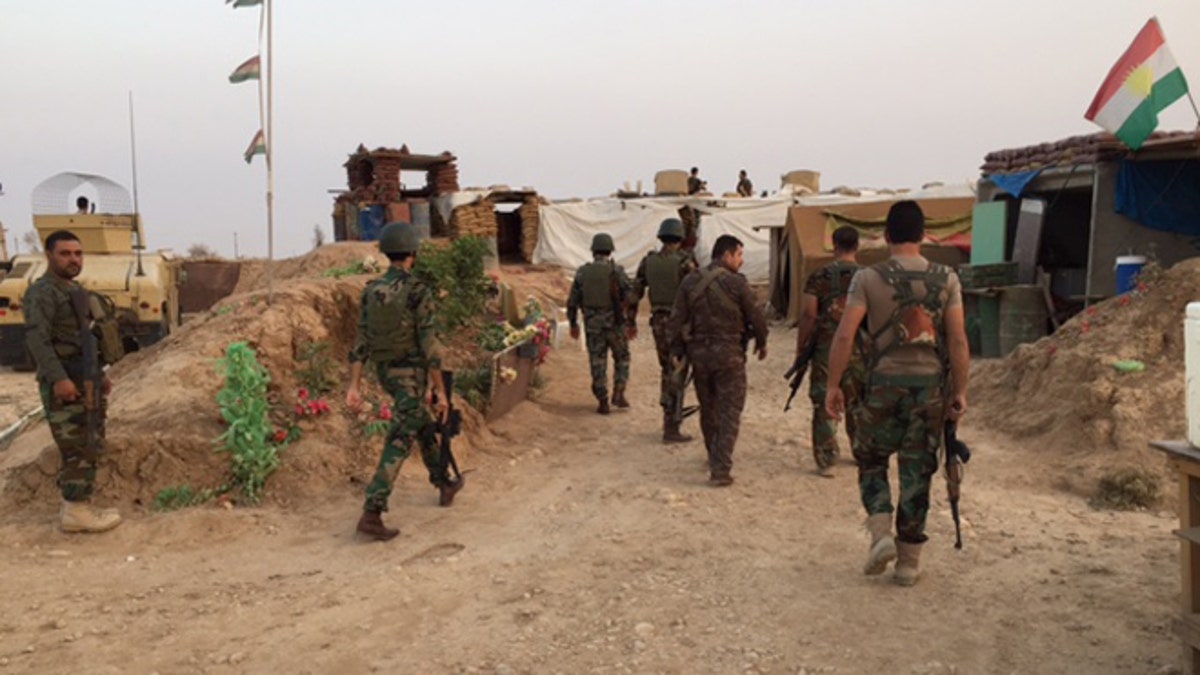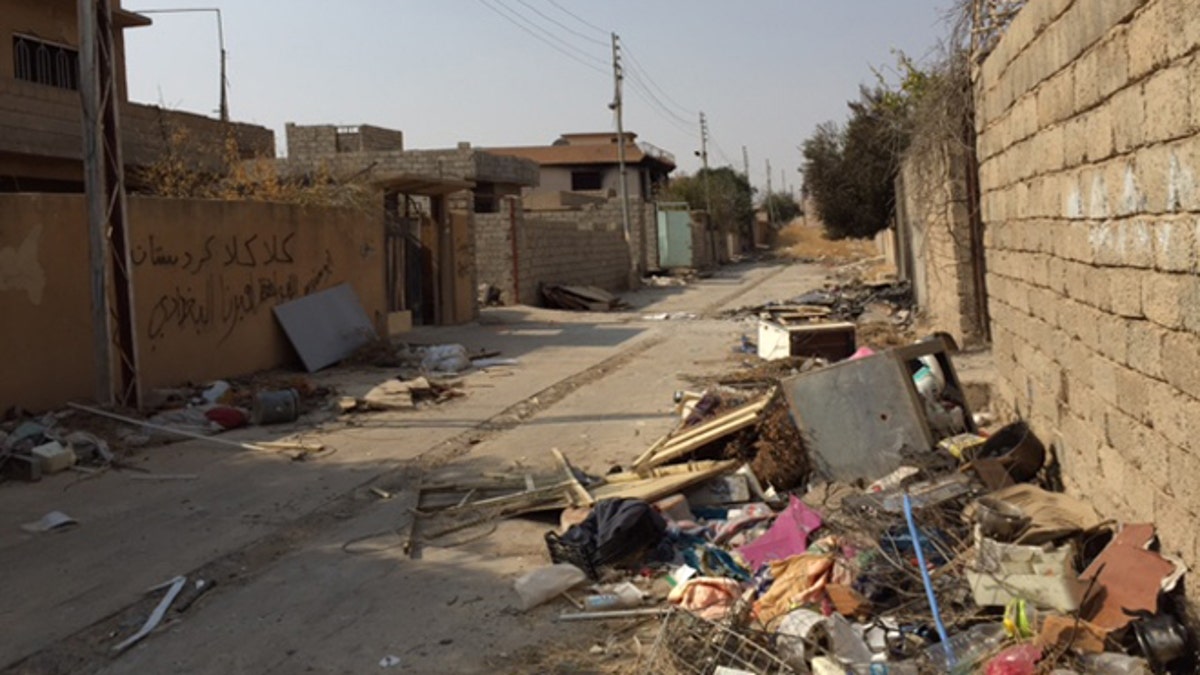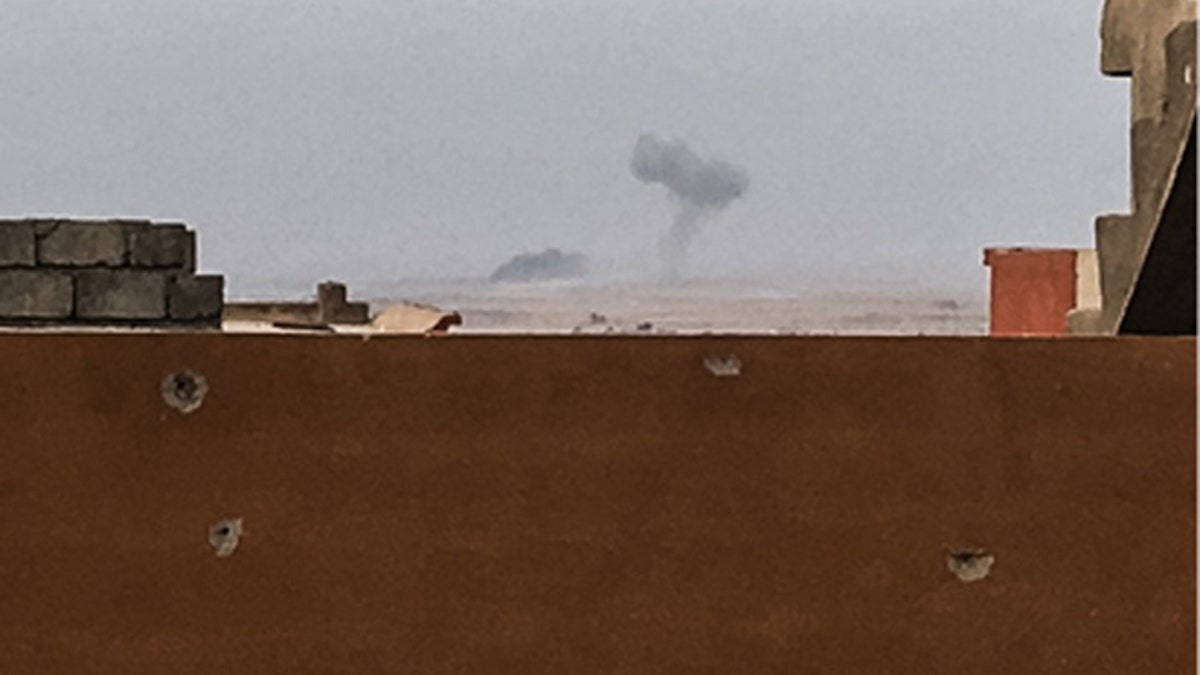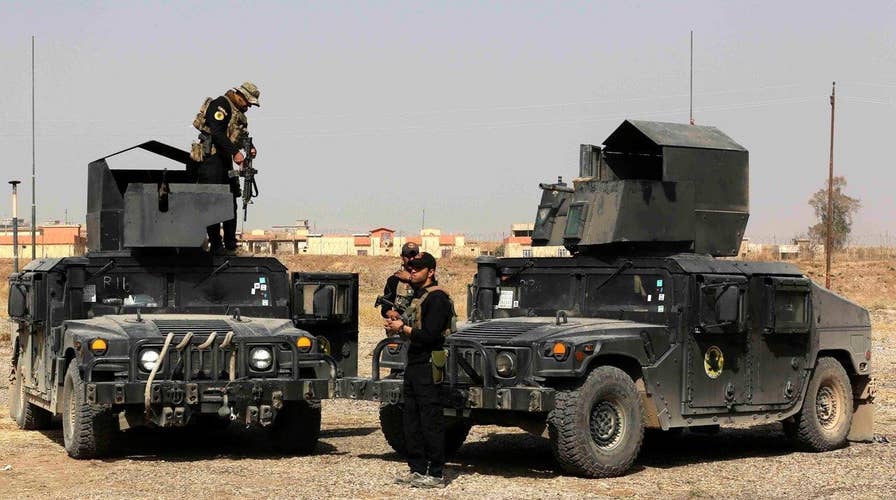A thin ribbon of dirt is all that protects hundreds of Yazidi soldiers from a regular bombardment from ISIS, attacks that in the last year have included chemical weapons.
The frontline post called Domiz snakes through a stretch of dusty desert plain, half a mile from ISIS outposts and three miles forward from the city center of Sinjar, called Shengal by the Yazidis and Kurds.
ISIS was driven back from Sinjar a year ago, but the Yazidi soldiers keep watch on the horizon. Their mission is to protect a capital left in ruins by a retreating ISIS army, and they regularly scramble from incoming mortar.

The Yazidi soldiers stand uneasy guard, accustomed to incoming mortars that sometimes include chemcial weapons. (FoxNews.com)
"They are still in the process of making these bombs," Colonel Marwan Sabri, in charge of the Yazidi Forces, said. "They will use everything they can on us."
Ever since the area was liberated by the Kurdish Peshmerga, after 14 months of ISIS occupation, Domiz has been the line of defense against ISIS. Its guard has been hit hard with the dangerous agents, including a barrage of 31 chlorine bombs on Feb. 11 that left dozens of Yazidi soldiers badly burned.
Yazidi battalion leader Luqman Ibrahim told FoxNews.com the chloride bombs ISIS used included sophisticated Russian-made shells, ones manufactured by the former Ba'ath Party Iraqi Army and more primitive, homemade ones.

Sinjar, the city the Yazidi protect, is a shadow of what it was before ISIS' occupation. (FoxNews.com)
U.S. airstrikes over the last five weeks are believed to have destroyed major chemical weapons factories and arsenals used by ISIS, and U.S. military brass has discounted the threat as national, Kurdish, Yazidi and U.S. forces move to oust ISIS from Mosul. But local military and intelligence leaders are now bracing for the brutal jihadist army to unleash whatever remains of its stockpile, and Domiz is a likely target.
A senior official with the Asayish, the leading security and intelligence authority in the Kurdish region, affirmed that "there are still many factories and places that ISIS is using to make these weapons" and said they are "absolutely" sure many more remain in the hands of ISIS.
In the February attack, chemical weapons fired by ISIS reached deep inside Sinjar city, a once bustling urban center home to more than 150,000, but now an apocalyptic wasteland after two years of ISIS occupation. Some 170 families have ventured back into their bombed out shells in a desperate attempt to pick up the pieces and move on with their lives, but the city is essentially a ghost town.

Smoke rises on the horizon, where ISIS is dug in. (FoxNews.com)
While no civilians were injured by the chemical warfare that landed inside, the fact that ISIS has the capability to reach that far - especially over the next few weeks of noose tightening - is of particular concern.
When Sinjar was taken back last year, Yazidi forces unearthed scores of ready-to-go chloride bombs and supplies, indicating that the city may have been a hub for developing or at least storing the deadly toxins. The regular attacks indicate that many of the weapons were simply moved out into the desert, off in the distance from the sentinels of Domiz.
The attacks prompted a request for protective gear from the Ministry of Peshmerga, but only 100 gas marks made it to the Yazidis, who number 8,000 fighters, said Sabri. U.S. officials recently stated that 9,000 have since been issued, but none was in sight on a recent evening as men manned their battlements.
Rather, the very young group of Yazidi soldiers - fresh faced recruits - hoisted their rifles, tightened the straps to their Kevlar helmets and gathered up blankets and bread. Then, with an enthusiastic wave goodbye, they finally stepped into their designated positions for what was to be another long night of unknowns, facing an enemy stationed less than half a mile away.
Indeed, the night would be among the hardest since the Sinjar liberation. Early Monday, their post and the neighboring Sinjar posts - stretched 43 miles - were bombarded by mortar and rockets for over four hours. Eight suicide bomber vehicles were destroyed and 30 ISIS members were killed in the battle, and two Yazidi Peshmerga were slightly wounded.
The renewed attacks on Domiz are seen as part of a suspected technique by ISIS leadership to distract from the Mosul operation by striking elsewhere.
In another diversion, ISIS has taken to burning tires in and around the sites from which they launch mortars to generate smoke for cover. The acrid smell of burning rubber wafts to the Yazidi fighters as they watch and wait.
Yet even amid the current uptick of violence in their region, almost daily bombardment or entry attempts of some description from ISIS members, Ibrahim is confident that the Iraq portion of the jihadist outfit, at least, is finally in its crumbling twilight.
"They used to come at us in bigger groups - now much smaller. It means they are lacking in fighter numbers," he added. "Their morale is broken, they are still dangerous, but definitely not like before."





















